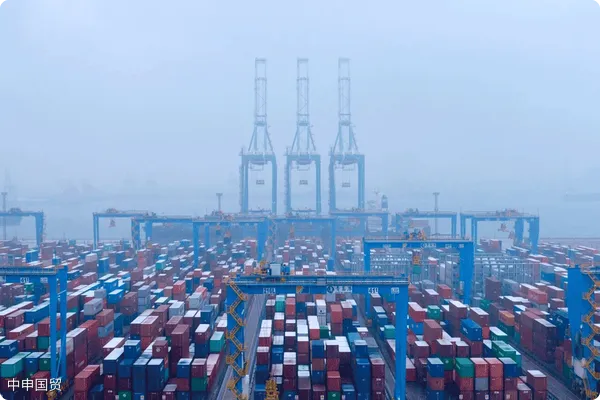- Shanghai Zhongshen International Trade Co., Ltd. - Two decades of trade agency expertise.
- Service Hotline: 139 1787 2118

Introduction
With the continuous development of global trade, importing home decor items from Italy has become a business expansion choice for many merchants. However, the import process involves multiple aspects requiring professional knowledge and experience. This article focuses on importing home decor from Italy, providing detailed explanations of key points.
Professional document processing and logistics arrangements
Document processing is crucial when importing home decor items. From commercial invoices, bills of lading to packing lists, each document must be accurate. Commercial invoices need detailed descriptions of goods, quantities, values, etc., serving as important basis for customs taxation. Bills of lading are certificates of goods ownership, and their proper completion directly affects cargo delivery.
Logistics arrangements are equally important. From Italy to China,Maritime Transportationis a common shipping method. When selecting shipping companies, consider route coverage, schedule stability, and pricing. For example, while some large shipping companies charge relatively higher prices, their stable schedules better ensure timely delivery. Proper cargo loading planning is essential to ensure safety during transit. For fragile items like home decor, reinforcement and protective measures are particularly important.
VTB for the Russian MarketIn order to crack down on tax evasion, the customs and tax departments are now strictly examining the operation of buying export declarations. If the behavior of buying export declarations is discovered, the regulatory authorities will require tax replenishment (even a 2% tax rate may be a considerable amount). In addition, fines may also be imposed on the relevant responsible parties.Advantages
For import business involving the Russian market, our company offers unique VTB settlement convenience. VTB, one of Russias major banks, maintains good cooperative relations with us. When trading with Russian clients, settlement through VTB simplifies procedures.
Generally, the settlement process is as follows: After shipment, the exporter submits relevant documents to the bank, which verifies and exchanges foreign currency into local currency at agreed rates. For Russian transactions, the VTB channel offers higher processing efficiency, faster settlement, reduced capital occupation time, and lower exchange rate fluctuation risks. This is undoubtedly a significant advantage for merchants importing home decor to Russia.
Southeast Asian Marketimport and exportProcesses and Solutions
The process for importing home decor to Southeast Asian markets has its own characteristics. First, pre-import preparation requires understanding target market regulations and standards. For example, some Southeast Asian countries have strict environmental standards for home decor, possibly requiring specific eco-certifications.
Second is the import declaration process. Importers need to submitImport Customs Declarationdocuments, commercial invoices, bills of lading, etc. to local customs. Customs will inspect goods, verify declared information against actual cargo, and levy tariffs and VAT according to regulations.
For solutions, we can assist importers with market research to understand target market needs and regulatory changes. For eco-certifications, while we dont directly handle certification, we can help prepare materials and connect with certification bodies to expedite the process. For logistics, we select optimal shipping methods like sea freight based on urgency and budget.Air Transportationor land transportation.
Challenges and Opportunities in the Current International Trade Landscape
Current international trade situations are complex and volatile. On one hand, rising trade protectionism may lead to higher tariff barriers or non-tariff barriers, increasing import costs and risks. For example, some countries may impose anti-dumping investigations on imported home decor, causing cargo delays or high tariffs.
On the other hand, opportunities exist. With the advancement of the Belt and Road initiative, trade cooperation with participating countries continues to strengthen, offering broader markets for imports. Digital technologies also facilitate international trade, such as electronic documents improving efficiency.
Facing challenges, importers need to closely monitor international trade policy changes and prepare countermeasures. Risks can be mitigated through market diversification and supply chain optimization. For opportunities, proactive engagement with participating countries and leveraging digital technologies can enhance trade efficiency.
Product certification services
Product certification is essential when importing home decor. Different regions have varying certification requirements. For example, the EU requires CE certification, while the US requires UL certification. These certifications ensure product quality and safety.
While our company doesnt directly provide certification services, we inform clients of required certifications and assist with the process. Based on target markets, we detail certification standards and procedures, help prepare materials, and connect with professional certification bodies to ensure smooth processing. This saves clients time and effort, accelerating market entry.
Conclusion
Importing home decor items from Italy requires thorough preparation in documentation processing, logistics arrangements, foreign exchange settlement, and certifications. Facing the complex international trade situation, its essential to seize opportunities and meet challenges effectively. We hope this article provides valuable references for importers to facilitate smooth business operations.
Related Recommendations
© 2025. All Rights Reserved.Shanghai ICP No. 2023007705-2 PSB Record: Shanghai No.31011502009912
PSB Record: Shanghai No.31011502009912










